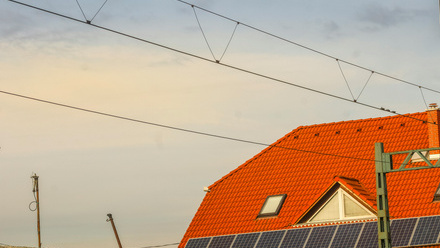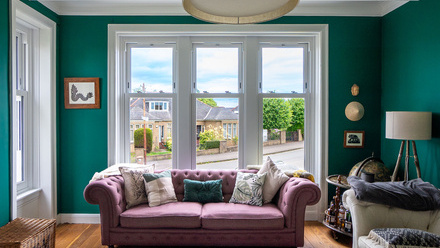Emotional architecture
When we think about architecture, we often perceive it as a physical entity – something that has a structure or a built form. The pandemic has brought a lot of attention towards the connection it holds with the physical health of its users, with a lot of people now being aware and conscious about their Indoor Air Quality and building microbiomes. The question that emerges now is, do our spaces impact our psychological well-being as well or do they just affect our physical health? Can the built environment effect and even alter our mood? Does it affect our productivity? Can spaces evoke emotions?
Emotions are the essence of our entire existence. We exercise emotions in everything that we do – in whatever we see, hear, touch, smell, or taste – our perception about all the things that we encounter in our life is based on the emotional response it elicits in us. Emotions not only help us in experiencing our surroundings fully, but they also communicate to us what aids and hinders our survival. While the concept of emotions is often put under the umbrella of psychology, architecture and built domain has their fair share of relevance in it. In general, we look at architecture and design as physical entity – a structure or a built form only. But we fail to understand the profound connection it has with human emotions.
From open spaces like parks, streets, plazas, squares, parade grounds; to residences, commercial, institutional, monumental, or public structures, the built environment stands proud as a representation of the people – reflecting their beliefs, values, successes and downfalls, experiences, events, economic status – thus making architecture and design an integral part of our lives. Everything around us is symbolic, everything evokes an emotion. If we break our experiences (both good and bad) into their smallest controllable parts, the results indicate that spaces have always had a physiological impact on us. While natural, green, open, and aesthetically pleasing landscapes and well-designed spaces stir a sense of awe in its users and make them feel more relaxed, happy, connected, and engaged; poorly designed, sterile, concrete, dense hardscapes have been proven to increase stress levels in its users and making them feel bored, irritated, claustrophobic or even depressed. This strong connection between the built environment and emotions happens when the users are interacting with the space.
Emotional architecture is a sublime act of poetic imagination which involves the user's body and mind. Experiencing a built form does not relate only to its spaces, form, and surfaces, but also in listening to its characteristic dialogues. As a user enters a space, a space enters the user as well. The experience is essentially the exchange and fusion of the object and the subject.
There are two levels at which architecture interacts and enhances its users experience. One is through cognition level — where the user is involved in processing and appraising the perceived information, and the other is at the emotional level- which is often understood as the adaptive reactions to the perceived information. Both interactions operate through closely interrelated systems. Where human emotion is a response to the design elements presented to them. The elements like water, light, color, form, style, materials, sound, and details incite feelings that empower the user to engage, excite, endure, interest, relax, stress, etc. In other words, how the design exudes a “sense of place”. This helps the architecture in taking a particular personality to trigger emotions in its user and connect with them.
Apart from evoking emotions, design has the power to enforce emotions as well. It is a strong tool that can be used by the designers to stimulate and direct a particular emotional response in its users which in turn not just maximize the potential and investment returns of the space but also enhances user experience of that space. This is often done by simulating the activities of the user and their behavioral patterns in the given spatial setting. As designers there are various ways in which we can mould and stimulate this experience in the spaces that we design. This multi-faceted stimulus can be achieved by using/altering the following:
- Volume and space planning – altering the flow of space to enhance impact, sense of journey or arrival.
- Light – using the light spills and shadows to create a sense of intimacy or drama.
- Colour – this involves implementation and strategic use of colour psychology in spaces.
- Texture- where coarse textures can evoke sense of disturbance, anger, or confusion while smooth surfaces elicit a sense of calmness on its users.
- Patterns- this involves using patterns to create illusions in our spaces.
- Sound – from maintaining the permissible noise levels to the selection of music and careful zoning of areas which is specific to their prominent function and activities.
- Ventilation- well-lit and ventilated spaces increase the user comfort in the spaces in turn affecting their productivity.
- Indoor and outdoor Landscape- this involves careful and strategic integration of nature in the spaces.






